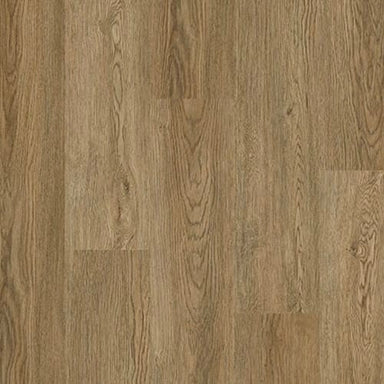
The Suwannee River collection brings the latest, fashion-forward colors to your home. The products range from an elegant Scandinavian design to a ...
View full detailsBeautiful vinyl flooring that is water, dent, scratch and kid-proof
What is vinyl plank flooring?
Luxury vinyl plank (LVP) flooring is a great option for shoppers looking for something that looks like wood, but is more durable. Vinyl flooring replicates the elegance of hardwood or tile floors but in almost all cases it is more affordable, durable and easier to install.
Vinyl plank is made from several layers, creating both its function and form. The top layer is a wear layer that protects against scratches and dents. Beneath that, a photographic layer provides the flooring with its authentic wood-like or tile-like appearance. The core layer contributes to the stability to the planks, and the most common cores are made from stone (SPC) or wood/plastic (WPC). Lastly there is a backing layer that offers cushioning and sound dampening.
One of the main advantages of vinyl flooring is its resilience to everything life throws at it. It's more durable than traditional hardwood, resistant to scratches and dents, and requires minimal maintenance.
What are the positives of vinyl flooring?
There are many positives to buying vinyl plank flooring, however the most common ones are:
What are the negatives of vinyl flooring?
Although LVP is extremely popular, it is still not hardwood flooring. The big disadvantage of vinyl flooring is that it does not add to the value of your home like hardwood does. Some shoppers also feel that walking on vinyl flooring is harder and colder than walking on other floor types.
Is vinyl plank flooring epensive?
Vinyl plank is affordable especially as compared to the hardwood alternatives. If you want something even more affordable than vinyl, we would recommend laminate.
Where can I find a store that carries vinyl plank?
You can find any of our store locations by going to the find a retailer tab.
Does vinyl flooring need an underlayment?
The honest answer is, sometimes usually not with vinyl plank.
Regardless of the underlayment, make sure that the subfloor should is clean, dry, and level before installing. For best results and to comply with warranty requirements, it's always a good idea to refer to the manufacturer's installation instructions specific to the vinyl flooring product.
What are the differences between LVP and LVT
LVP and Luxury LVT are both types of vinyl flooring but differ mainly in their form and appearance.
Appearance
Usage
Performance:

